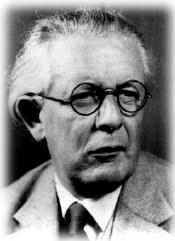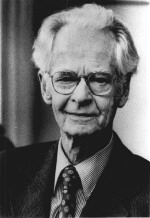Cognitive Constructivist
Theory
Dissatisfaction
with behaviorism's strict focus on observable behavior led edu cational
psychologists such as
Jean Piaget
and
William Perry
to demand an approach to learning theory that paid more attention to
what went on "inside the learner's head." They developed a cognitive
approach that focused on mental processes rather than observable
behavior. Common to most cognitivist approaches is the idea that
knowledge comprises symbolic mental representations, such as
propositions and images, together with a mechanism that operates on
those representations. Knowledge is seen as something that is actively
constructed by learners based on their existing cognitive structures.
Therefore, it is relative to their stage of cognitive development;
understanding the learner's existing intellectual framework is central
to understanding the learning process.
cational
psychologists such as
Jean Piaget
and
William Perry
to demand an approach to learning theory that paid more attention to
what went on "inside the learner's head." They developed a cognitive
approach that focused on mental processes rather than observable
behavior. Common to most cognitivist approaches is the idea that
knowledge comprises symbolic mental representations, such as
propositions and images, together with a mechanism that operates on
those representations. Knowledge is seen as something that is actively
constructed by learners based on their existing cognitive structures.
Therefore, it is relative to their stage of cognitive development;
understanding the learner's existing intellectual framework is central
to understanding the learning process.
Methodological behaviorism began as a reaction against the introspective
psychology that dominated the late 19th and early 20th centuries. Introspective psychologists such as
Wilhelm Wundt
maintained that the study of consciousness was the primary object of
psychology. Their methodology was primarily introspective, relying
heavily on first-person reports of sensations and the constituents of
immediate experiences. Behaviorists such as
J. B. Watson
and
B. F. Skinner
rejected introspectionist methods as being subjective and
unquantifiable. Instead, they focused on objectively observable,
quantifiable events and behavior. They argued that since it is not
possible to observe objectively or to quantify what occurs in the mind,
scientific theories should take into account only observable indicators
such as stimulus-response sequences. According to Skinner [reference]:
late 19th and early 20th centuries. Introspective psychologists such as
Wilhelm Wundt
maintained that the study of consciousness was the primary object of
psychology. Their methodology was primarily introspective, relying
heavily on first-person reports of sensations and the constituents of
immediate experiences. Behaviorists such as
J. B. Watson
and
B. F. Skinner
rejected introspectionist methods as being subjective and
unquantifiable. Instead, they focused on objectively observable,
quantifiable events and behavior. They argued that since it is not
possible to observe objectively or to quantify what occurs in the mind,
scientific theories should take into account only observable indicators
such as stimulus-response sequences. According to Skinner [reference]:
The mentalistic problem can be avoided by going directly to the prior physical causes while bypassing intermediate feelings or states of mind. The quickest way to do this is to…consider only those facts which can be objectively observed in the behavior of one person in its relation to his prior environmental history.
Radical behaviorists such as Skinner also made the ontological claim that facts about mental states are reducible to facts about behavioral dispositions.
Knowledge
Behaviorists maintain that knowledge is a passively absorbed behavioral repertoire. Cognitive constructivists reject that claim, arguing instead that knowledge is actively constructed by learners and that any account of knowledge makes essential references to cognitive structures. Knowledge comprises active systems of intentional mental representations derived from past learning experiences. Each learner interprets experiences and information in the light of their extant knowledge, their stage of cognitive development, their cultural background, their personal history, and so forth. Learners use these factors to organize their experience and to select and transform new information. Knowledge is therefore actively constructed by the learner rather than passively absorbed; it is essentially dependent on the standpoint from which the learner approaches it.
Behaviorists such as Watson and Skinner construe knowledge as a repertoire of behaviors. Skinner argues that it is not the case that we use knowledge to guide our action, rather "knowledge is action, or at least rules for action" (p. 152). It is a set of passive, largely mechanical responses to environmental stimuli. So, for instance, the behaviorist would argue that to say that that someone knows Shakespeare is to say that they have a certain repertoire of behavior with respect to Shakespeare( p. 152). Knowledge that is not actively expressed in behavior can be explained as behavioral capacities. For example, "I know a bluebird when I see one" can be seen as effectively equivalent to "I have the capacity to identify a bluebird although I am not now doing so" (p. 154). If knowledge is construed as a repertoire of behavior, someone can be said to understand something if they possess the appropriate repertoire of behavior. No mention of cognitive processes is necessary (pp. 156-7).
Learning
Because knowledge is actively constructed, learning is presented as a process of active discovery. The role of the instructor is not to drill knowledge into students through consistent repetition, or to goad them into learning through carefully employed rewards and punishments. Rather, the role of the teacher is to facilitate discovery by providing the necessary resources and by guiding learners as they attempt to assimilate new knowledge to old and to modify the old to accommodate the new. Teachers must thus take into account the knowledge that the learner currently possesses when deciding how to construct the curriculum and to present, sequence, and structure new material.
From a behaviorist perspective, the transmission of information from teacher to learner is essentially the transmission of the response appropriate to a certain stimulus. Thus, the point of education is to present the student with the appropriate repertoire of behavioral responses to specific stimuli and to reinforce those responses through an effective reinforcement schedule (Skinner, p. 161). An effective reinforcement schedule requires consistent repetition of the material; small, progressive sequences of tasks; and continuous positive reinforcement. Without positive reinforcement, learned responses will quickly become extinct. This is because learners will continue to modify their behavior until they receive some positive reinforcement.
Motivation
Unlike behaviorist learning theory, where learners are thought to be motivated by extrinsic factors such as rewards and punishment, cognitive learning theory sees motivation as largely intrinsic. Because it involves significant restructuring of existing cognitive structures, successful learning requires a major personal investment on the part of the learner (Perry, 1999, p. 54). Learners must face up to the limitations of their existing knowledge and accept the need to modify or abandon existing beliefs. Without some kind of internal drive on the part of the learner to do so, external rewards and punishments such as grades are unlikely to be sufficient.
Behaviorists explain motivation in terms of schedules of positive and negative reinforcement. Just as receiving food pellets each time it pecks at a button teaches a pigeon to peck the button, pleasant experiences cause human learners to make the desired connections between specific stimuli and the appropriate responses. For example, a student who receives verbal praise and good grades for correct answers is more likely to learn those answers effectively than one who receives little or no positive feedback for the same answers. Likewise, human learners tend to avoid responses that are associated with negative reinforcements such as poor grades or negative feedback.
Instruction
Cognitivist teaching methods aim to assist students in assimilating new information to existing knowledge, and enabling them to make the appropriate modifications to their existing intellectual framework to accommodate that information. Thus, while cognitivists allow for the use of "skill and drill" exercises in the memorization of facts, formulae, and lists, they place greater importance on strategies that help students to actively assimilate and accommodate new material. For instance, asking students to explain new material in their own words can assist them in assimilating it by forcing them to re-express the new ideas in their existing vocabulary. Likewise, providing students with sets of questions to structure their reading makes it easier for them to relate it to previous material by highlighting certain parts and to accommodate the new material by providing a clear organizational structure.
Because learning is largely self-motivated in the cognitivist framework, cognitivists such as A. L. Brown and J. D. Ferrara have also suggested methods which require students to monitor their own learning. For instance, the use of ungraded tests and study questions enables students to monitor their own understanding of the material. Other methods that have been suggested include the use of learning journals by students to monitor progress and highlight any recurring difficulties, and to analyze study habits.
Behaviorist teaching methods tend to rely on so-called "skill and drill" exercises to provide the consistent repetition necessary for effective reinforcement of response patterns. Other methods include question (stimulus) and answer (response) frameworks in which questions are of gradually increasing difficulty, guided practice, and regular reviews of material. Behaviorist methods also typically rely heavily on the use of positive reinforcements such as verbal praise, good grades, and prizes. Behaviorists test the degree of learning using methods that measure observable behavior such as exams. Behaviorist teaching methods have proved most successful in areas where there is a 'correct' response or easily memorized material. For example, while behaviorist methods have proved to be successful in teaching structured material such as facts and formulae, scientific concepts, and foreign language vocabulary, their efficacy in teaching comprehension, composition, and analytical abilities is questionable.
Reference
Perry, W. G. (1999). Forms of Ethical and Intellectual Development in the College Years. San Francisco: Jossey-Bass Publishers
Skinner, B. F. (1976). About Behaviorism, New York: Vintage Books.
